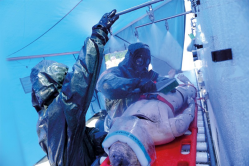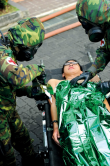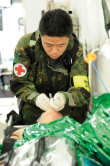TECHNOLOGY
TO SAVE LIVES
12 Dec 2012
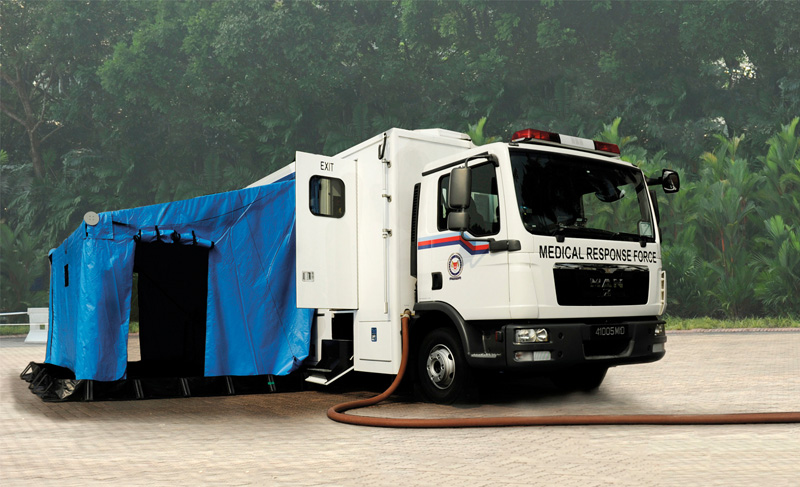
With the newly-acquired Medical Decontamination/Treatment Vehicle (MDTV), the Singapore Armed Forces' (SAF's) Medical Response Force (MRF) can take care of casualties swiftly and efficiently in the event of a chemical, biological or radiological (CBR) agent outbreak.
The 1995 Sarin gas attack on the Tokyo subway, the 2001 anthrax attacks in the United States, and more recently, the nuclear disaster in Fukushima, Japan, serve as poignant reminders of the deadliness of CBR incidents.
It is imperative to thoroughly decontaminate and quickly treat casualties that have been exposed to these threats. In view of this, the MRF - an elite medical team on 24/7 standby to handle such incidents at SAF key installations - has acquired five MDTV units.
Automated set-up process
In the past, MRF personnel had to transport stores to the incident site and then manually set up the casualty decontamination section, which comprises tentages and other equipment that have to be assembled on location. It was a physically arduous task made even more difficult as the men are clad in heavy Mission-Oriented Protective Posture (MOPP 4) suits.
In the past, conventional deployment takes about 20 minutes. However, with the new MDTV, the decontamination and treatment areas can be fully set up and ready within 10 minutes.
Many labour-intensive processes are automated with the MDTV, easing the heavy workload of the MRF personnel and reducing the time needed before actual decontamination and treatment can take place. For example, at the push of a button, external overhead canopies unfold from each side of the vehicle, forming a Rapid Deployment Shelter (RDS). The MDTV is also fitted with the necessary stores and equipment such as integrated shower systems on board and decontamination tents.
Different capabilities
As its name suggests, the MDTV can be deployed in both decontamination and treatment modes. To maximise response time and capability, once a vehicle is configured in a specific mode, it will remain that way for the entire operation. Hence, at least one vehicle will be deployed for decontamination and another for treatment. However, each can be quickly re-configured to another mode if needed.
In decontamination mode, the shelters on each side of the vehicle are used as "lying lanes", where casualties, usually unconscious or injured and unable to walk, are thoroughly cleansed by MRF troopers. The cabin is used to provide two "walking lanes", where mobile casualties will rinse themselves with the showers provided to remove the contaminants on their bodies.
In treatment mode, the MDTV is designed to accommodate eight stretchers (three each in the two shelters outside and two in the on-board cabin). Casualties are assessed and given different priority statuses depending on the severity of their injuries.
The most severely injured are moved to the cabin where doctors will perform emergency life-saving procedures. The other casualties will be treated by doctors and medics in the shelters outside, or rest on benches set up next to the vehicle.
After being assessed and stabilised by the doctors, the casualties will be sent to hospitals via ambulances for further treatment.
Enhanced response and safety
Elaborating on the advantages of the MDTV, Lieutenant Colonel (Dr) Michael Ong, Commanding Officer of MRF, said: "It saves both time and manpower as it allows casualties to be seen and decontaminated more quickly, and it reduces the amount of effort and soldiers needed to deploy such a facility.
"Furthermore, it offers greater safety for the troopers as it reduces physical exertion, and thus decreasing the degree of heat stress."
Manufactured by ST Kinetics, the MDTV has been used in training exercises since June this year, and achieved full operational capability in October.
When it comes to any life-saving effort, every second counts. With this vehicle at hand, the MRF looks set to respond more quickly and efficiently in dealing with CBR situations.
Decontamination and medical treatment process
1) MRF troopers, decked out in their MOPP 4 suits, attending to casualties exposed to CBR threats at the triage area, where they look out for basic vital signs, such as airway breathing and circulation. Before triaging, casualties are hastily decontaminated by spraying water. The troopers then assess the casualties and perform the necessary first-aid procedures.
2) MRF troopers remove the casualty's contaminated uniform before thoroughly rinsing him with water in the RDS deployed at the side of the vehicle. These ''lying lanes'' are for injured or unconscious casualties who are unable to walk and require assistance.
3) A Chemical Agent Monitor is used to check for traces of leftover chemicals to ensure that the casualty has been properly cleansed. A foil is wrapped around the casualty to keep his body warm, and he will be moved to the treatment MDTV via stretchers and rollers.
4) Severely injured casualties are moved to the cabin of the MDTV in treatment mode, which is stocked with medical equipment and stores. For such cases, the Medical Officer will perform emergency medical treatment. Upon further assessment, the casualty will then be evacuated to a definitive medical care facility such as a hospital to receive further treatment.
| TECH SPECS |
|---|
| Dimensions 8.92m (Length) x 2.85m (Width) x 3.6m (Height) |
| Top speed 50kmh |
| Weight 9,318kg (unladen) 11,351kg (fully-laden) |
ALSO READ IN TECHNOLOGY

AI joins the fight in national cyber defence exercise
12 Nov 2025
AI and closer collaboration among agencies and industry are taking centre stage in this year’s Critical Infrastructure Defence Exercise (CIDeX).
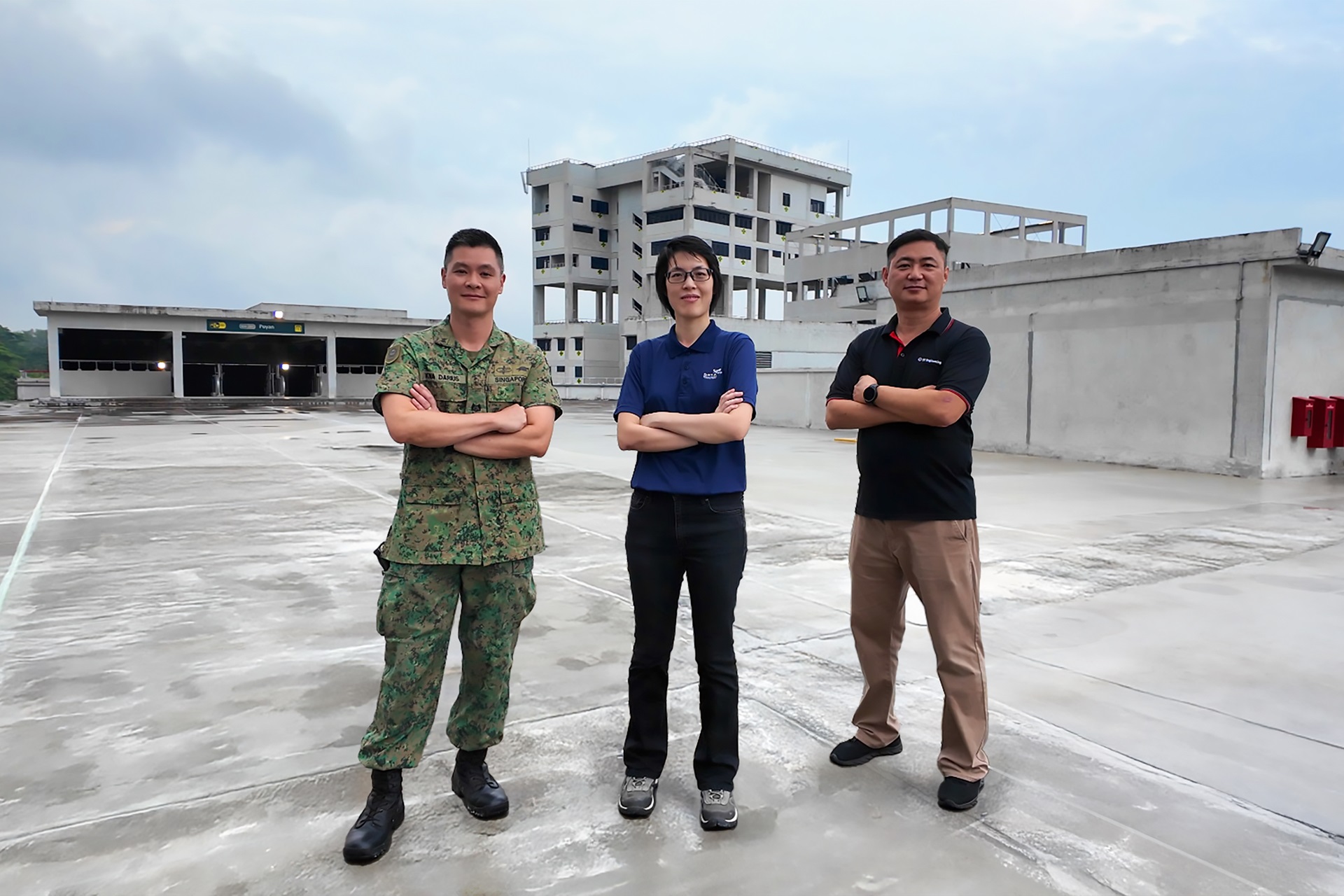
They built this city
01 Oct 2025
Turning vision to reality: the team behind SAFTI City clinches the Defence Technology Prize 2025 Team (Engineering) Award!
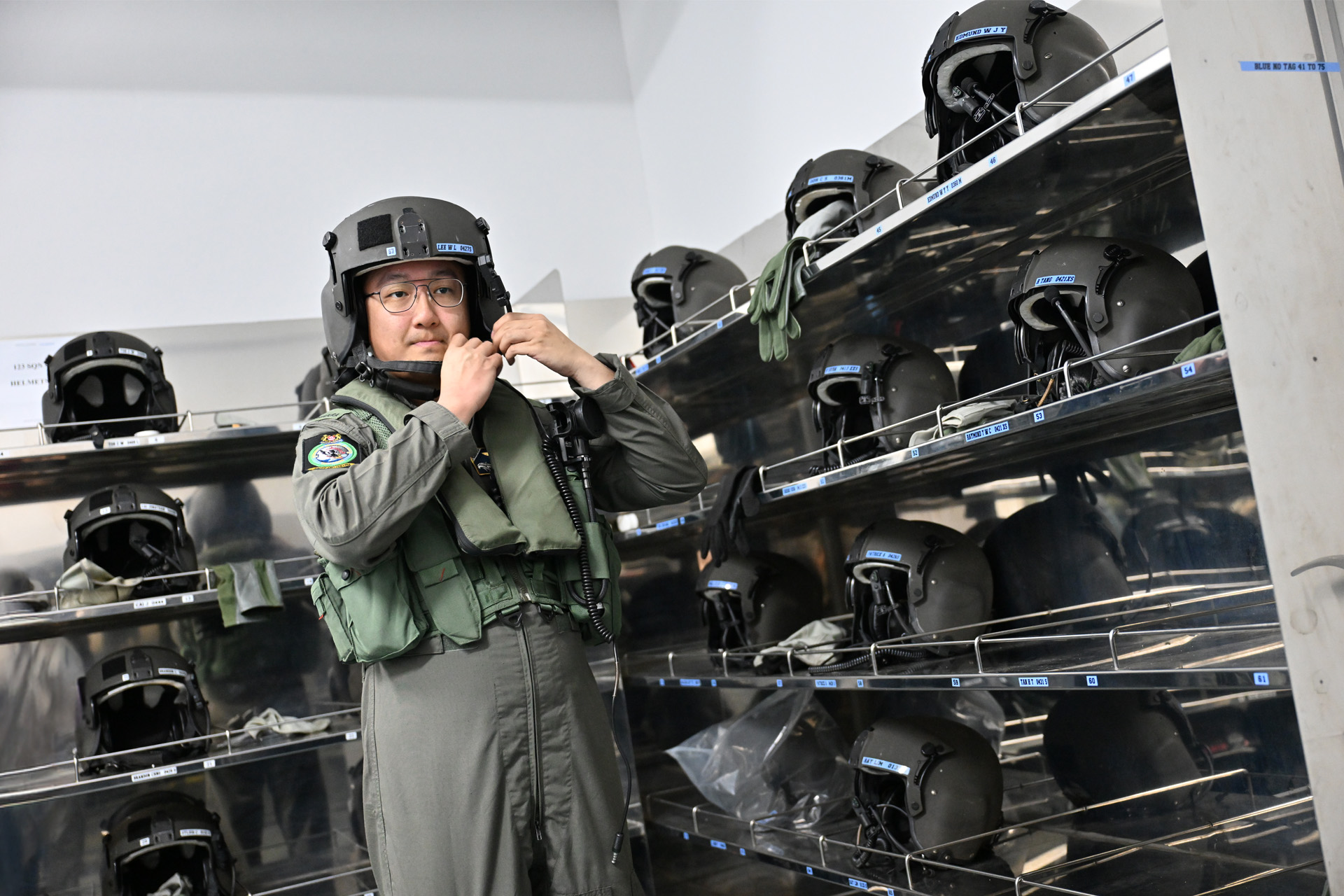
Operating over skies & seas
22 Aug 2025
This gear is designed to help a Sensor Supervisor survive emergencies in the air and at sea.



